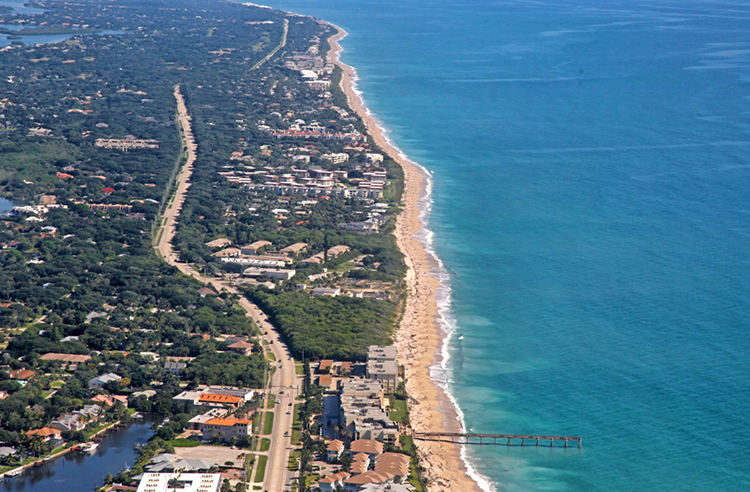
As it shifts from primarily funding indigent hospital stays to investing in primary and preventative health for the poor and uninsured, the Indian River Hospital District expects its property tax rate to continue to decrease this fall. That’s good news for island residents, who account for nearly half of the revenue the district collects.
Over the past seven years, the Hospital District has reduced its tax rate by 28 percent. In 2015, property owners were billed 99.51 cents for every $1,000 of taxable value. But in 2021, that tax rate was down to 71.44 cents, bringing in nearly $14.2 million in real estate taxes plus another half million in tangible property tax.
Island residents pay 49 percent of Hospital District property taxes annually, or an average of $600 per 32963 household.
During the transition period after Cleveland Clinic took over the Indian River Medical Center, the district paid $6 million per year to Cleveland Clinic for indigent care.
Going forward, that money will be available to fund more healthcare services for the county’s low-income residents – primary care for kids and adults, preventative care and health screenings, management of chronic conditions to keep people out of the Emergency Department, prenatal care for healthier moms and babies, and mental health treatment and counseling.
But as Executive Director Ann Marie Suriano pointed out, many of the programs the Hospital District funds are not aimed solely low income at low-income patients.
“Roughly $4 million of our $14.5 million collected in property taxes goes to services or organizations to provide programs that are accessible to all, including those that live on the island,” Suriano said.
These programs include the Tykes & Teens mental health and wellness services, Childcare Resources, the Substance Awareness Center, the Mental Health Collaborative – McCabe Connections Center, the Substance Awareness Center and the Indian River Senior Collaborative.
“Also, many of those on the island are served by people who access the services we fund because they cannot afford healthcare or health insurance,” Suriano said.
The district grants money to support programs run by community organizations that serve a wide variety of people, from the Mental Health Association’s school violence prevention and intervention program for school-age kids, and six Healthy Start programs for newborns and new parents, to the Senior Resource Association’s Emergency Meals on Wheels program for the most vulnerable elderly in the community.
In addition, Partners in Women’s Health at Cleveland Clinic Indian River Hospital – a collaboration of the district and the hospital – is a gynecology and obstetrics practice that serves patients with private insurance or with no insurance, and is one of few OB practices that accepts Medicaid patients.
Residents of the Town of Indian River Shores alone provide 17 percent of the total Hospital District taxes. Shores Councilman Bob Auwaerter said he has not taken a good look at the district’s books since the Cleveland Clinic took over the hospital in 2018, but that he sees value in the $2.5 million that town residents paid this fiscal year into district coffers through property taxes.
“In terms of funding some of the indigent care and health clinics, I have absolutely no problem with that,” Auwaerter said. “Anytime you can keep people out of the hospital by having them go to clinics and so forth I think it saves money. Clearly there’s an advantage to that.”
Routinely at Hospital District meetings, funded agencies report on their progress and challenges, and prospective agencies make pitches to be funded.
Hospital District board members, especially Ann Marie McCrystal, always encourage agencies to avoid duplication of efforts, and to seek out ways to work with other groups addressing the same problems or serving the same clientele.
Having people like McCrystal – a retired cardiothoracic surgery nurse, and founder of the Visiting Nurse Association and Hospice house – on the district board makes it a resource of knowledge and connections in the healthcare community, not just a source of funding.
School Board member and former Shores mayor Brian Barefoot, an 11-year Indian River Medical Center Foundation (now called Cleveland Clinic Hospital Foundation) board member, has said repeatedly that education and healthcare are the two most important issues Indian River County faces – that’s why he got involved in both.
Barefoot said the shift of the Hospital District from primarily funding indigent hospital stays to enhancing existing healthcare programs and supporting new efforts is a smart way to use taxpayer money.
“If you do a better job with preventative care, with testing and with mental health, and the result is medical care in the hospital that you can avoid, the conclusion you come to is that’s a good investment long term. You don’t need an MBA, it just makes sense,” Barefoot said.
“If it results in a healthier community, that means healthier people working in restaurants and in stores,” Barefoot said. He said the area is blessed to have the largesse of the Cleveland Clinic foundation in the mix now for indigent care because it’s made the hospital fiscally stronger to serve the community.
“Historically, along with lifestyle and weather, healthcare has become a major reason people come here, even more so now that we have Cleveland Clinic,” Barefoot said.
District board members are in the midst of finalizing a strategic plan for the Hospital District’s future, with an emphasis on improving access to quality healthcare for all Indian River County residents.
The board meets twice each month, with a more informal chairman’s roundtable meeting typically on the third Wednesday at district offices, followed by a business meeting in the Indian River County Commission Chambers the next day.



